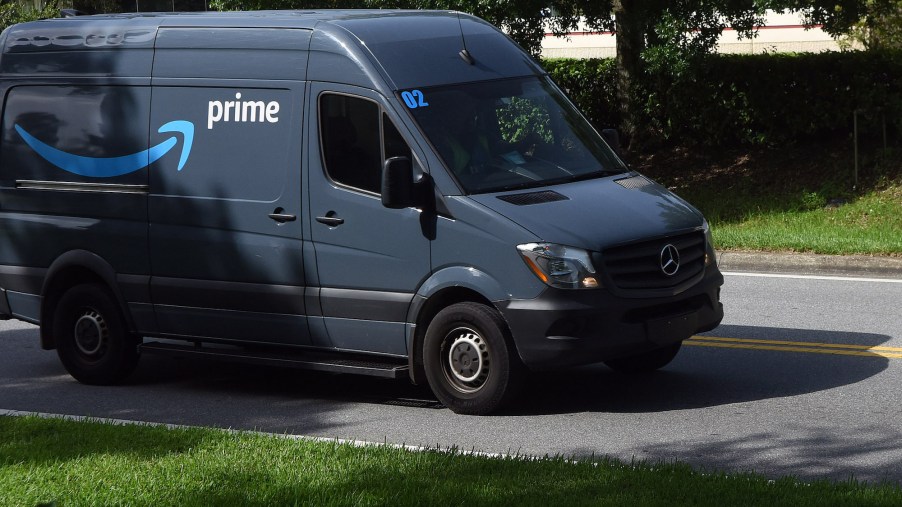
Amazon Drivers Claim They’re Threatened to Speed to Meet Their Delivery Quotas
There’s no question you can find good deals on Amazon. The company is known for innovation and technological advances, and it’s changed the face of retail. But providing lightning-fast delivery at a low cost requires employees to work at a pace that some delivery drivers believe is impossible. In fact, they say they’re under so much pressure to get their packages out fast they think their supervisors would rather see them cut corners on car safety than miss their delivery quotas.
Amazon wields power
Amazon’s delivery network is so vast that it affects the van market. The Ford Transit, Mercedes-Benz Sprinter, and Ram ProMaster vans have seen dramatic sales spikes because Amazon added them to its delivery fleet. And eventually, it looks as if the retail giant might abandon these popular vans for electric vehicles.
But according to CNBC, Amazon doesn’t just influence the van market. The company has also broken ground in efficiency standards. One example is that contracted delivery drivers must download and run Mentor, an app that monitors their on-the-job driving.
The goal is to keep tabs on drivers’ behavior to encourage safe driving for their sakes and those around them. The app has raised concerns about accuracy and privacy issues. But it turns out it might not even be working well to curb risky driving. Drivers are side-stepping the tracking — and it’s because they’re getting pressure from their bosses.
Amazon delivery drivers feel pressured to speed
Amazon delivery drivers say they’re being pressured to drive unsafely so that they hit their delivery times, Vice reports. Delivery drivers have claimed dispatchers instruct them to turn off Mentor halfway through their shifts so that they can drive faster — and more recklessly.
In one instance, drivers with a 10-hour shift were instructed, “Starting tomorrow, everyone needs to be logged into Mentor for at least 2 hours no more no less, so make sure that’s one of the first things we’re doing in the mornings.”
Amazon drivers claim the demanding delivery times lead supervisors to pressure them to shut off the app so that they won’t be detected rushing through their route.
“Speeding was the main thing. They were harsh on drivers that weren’t going as fast as they wanted,” one driver told Vice. “I complied when they asked me to turn off the app because I didn’t want to cause friction. But it was a lot of stress, high blood pressure, seething anger, and frustration.”
Although many drivers say the pressure to drive unsafely is stressful, the company expectations for delivery times sometimes make it impossible to keep up otherwise.
Amazon is seeking a solution to the problem, but not by considering reducing drivers’ loads.
Amping up oversight
In February, Amazon announced drivers would be required to sign a “biometric consent form” as a condition of employment. According to Car and Driver, the company will add onboard cameras to delivery vehicles. The cameras will store images of the driver and monitor the vehicle’s speed, location, turns, acceleration, following distance, and braking.
Drivers can turn the camera off while the vehicle isn’t running, but it will start automatically upon ignition.
The new system seems harder to skirt than the Mentor app. However, it fails to address the pressure drivers face. If they can’t complete their deliveries on time safely, risky driving practices will likely continue.


